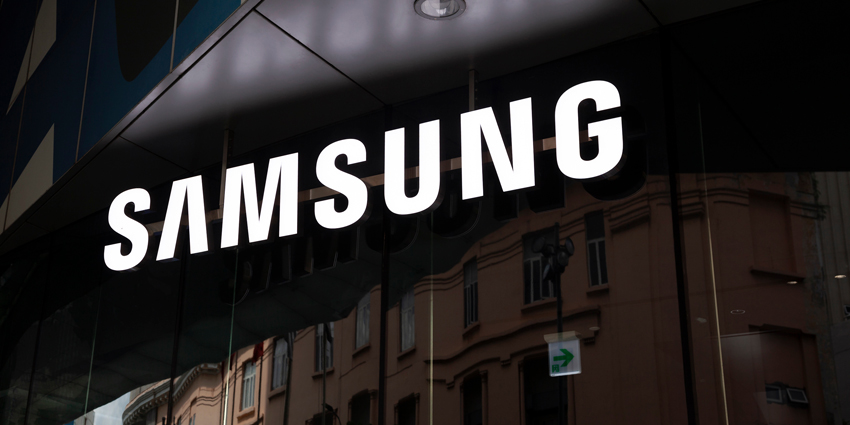This week, the dedicated team over at patentlyapple discovered a new Samsung patent application highlighting the firm’s continued work towards an upcoming XR headset for the Galaxy ecosystem.
While many details are still undisclosed, this new information strongly indicates that Samsung is moving closer to fully unveiling its upcoming XR device. As always, it’s important to note that patent filings and requests may not necessarily represent the final product. However, these patent developments can provide insight into the direction of the future XR device.
The headset’s design appears to follow conventions. Its headband is similar to Vision Pro and others, leveraging a fastening device at the back of the head.
According to the patent filing, the device will also contain AI and haptic integration. AI should be expected in upcoming headsets as the technology merges, but the haptic integration and its end result will be interesting.
Over the weekend, another finding from patentlyapple showcased how Samsung is poised to debut the headset in 2025 if an outlook heading is to be believed.
The header noted how a Samsung XR device for the Galaxy ecosystem is due in 2025. However, keen eyes will notice that Samsung made the same promise in 2024.
At Unpacked 2024, TM Roh, the President of Samsung’s Mobile Division, and Google’s Senior Vice President of Platforms and Devices, Rick Osterloh, said that the XR device is under rigorous development and aims for a late 2024 release.
He also added:
Looking forward, we’re collaborating to bring next-generation experiences across Galaxy products from smartphones and wearables to even future technologies like the upcoming XR platform we’ve been working closely to develop in partnership with Samsung and Qualcomm.
Roh also confirmed that the device is coming “later this year,” a conflicting report from Roh, however, as earlier reports from MWC suggested a 2025 launch and this is only confirmed by the patentlyapple November findings.
The device has the potential to be a consumer-focused product, but it could also be used in enterprise settings, mainly through its divisions, such as Samsung Heavy Industries. This positions the company well in promoting the adoption of XR devices among clients already dependent on Samsung’s workplace solutions.
More on Samsung’s XR Headset
Last month, Samsung publicly updated the development of its XR device through a patent listing with the United States Patent and Trademark Office (USPTO) called “Method and System for Grouping Plurality of Devices.” This patent highlights a feature for AR smart glasses that allows multiple users to interact with a shared piece of AR content.
Interestingly, the patent explains that the hypothetical Samsung smart glasses users can engage with AR content while supporting an additional mobile device user. This means users can experience the same augmented reality content through a smartphone or tablet.
This significant advancement shows that Samsung values interoperable XR hardware and software. The company strives to deliver an XR device that takes advantage of its existing mobile ecosystem, which is a considerable asset.
Furthermore, by employing an approach encompassing smart glasses and mobile devices, Samsung can boost AR adoption among users who may not have access to advanced wearable hardware. This could lead to greater consumer and workplace adoption of smart glasses as new users encounter more accessible XR use cases and become interested in acquiring dedicated hardware.
Recent reports have surfaced about Samsung’s highly anticipated XR headset, based on an earlier listing from GeekBench. Leaked specifications suggest that the device will feature 16GB of RAM and a clock speed of 2.36GHz and operate on the Android 14 framework.
The leaks also indicate that Samsung’s headset will utilize a 6-core Android 14 chipset, likely similar to the well-known Snapdragon XR2+ Gen 2 chipset. Earlier this year, Qualcomm laid the groundwork for the Samsung XR headset by announcing its XR2+ Gen 2 Platform, with Samsung and Google as partners, making this integration logical.
With the XR device, Samsung aims to provide a headset that integrates a comprehensive operating system and a supportive hardware ecosystem, leveraging its Galaxy product portfolio. Similar to Apple’s Vision Pro headset, Samsung’s Galaxy ecosystem could foster familiarity and confidence, thereby enhancing the XR device’s visibility.
While specific details were limited during that announcement, earlier reports suggest that the headset will include a microOLED display, eight tracking cameras, a Time-of-Flight (ToF) sensor, and capabilities for voice commands, eye tracking, and hand tracking.
Google and Qualcomm Join Samsung’s Device Journey
Samsung has officially announced that the upcoming XR headset will be developed in collaboration with Google and Qualcomm. Along with the XR headset, Samsung introduced several innovative technology products at MWC, including a smart ring and assistive mobility robotics, indicating the development of a broader emerging technology ecosystem.
Inkang Song, the Vice President and Head of Samsung Electronics’ Technology Strategy Team explained that Samsung, Google, and Qualcomm are collaborating to create high-quality XR experiences for Galaxy users.
Samsung is thrilled to collaborate with Qualcomm Technologies and Google in revolutionizing the mobile industry once more. With Samsung’s mobile expertise and our joint commitment, we aim to create the best-in-class XR experience for Galaxy users.
Shahram Izadi, the Vice President of Augmented Reality at Google, highlighted the advantages of Android ecosystem support, which will enable developers to utilize the capabilities of Snapdragon XR2+ Gen 2 and collaborate with Samsung and Qualcomm to develop innovative, immersive, and spatial XR experiences.
The Snapdragon XR2+ Gen 2 chipset is renowned for delivering 4.3K resolution. Hugo Swart, the Vice President and General Manager of XR at Qualcomm Technologies, mentioned that the new hardware provides exceptionally clear visuals, catering to demanding user display requirements such as room-scale screens, life-size overlays, and virtual desktops.
Qualcomm’s upgraded GPU capabilities enable AR/MR devices to support more than 12 concurrent cameras, ensuring accurate tracking of users, their movements, and their environments. Furthermore, these GPU enhancements significantly improve the AI assistant features available in smart glasses and headsets.
In addition to offering a 4.3K resolution and improved GPU performance, the chipset includes 8 times better AI capabilities, a 12 ms full-color video see-through experience, and support for a resolution of 4.3K x 4.3K. It also features “Game Super Resolution,” “Space Warp,” and “Foveated rendering.” It also supports depth sensors, eye tracking, hand tracking, face tracking, and controller tracking, as well as Wi-Fi 7 and Wi-Fi 6/6E compatibility.
While the Qualcomm chipset does not disclose all the details about the Samsung device, the features of the XR2+ Gen 2 Platform offer valuable insights into the upcoming product’s usability and performance.







